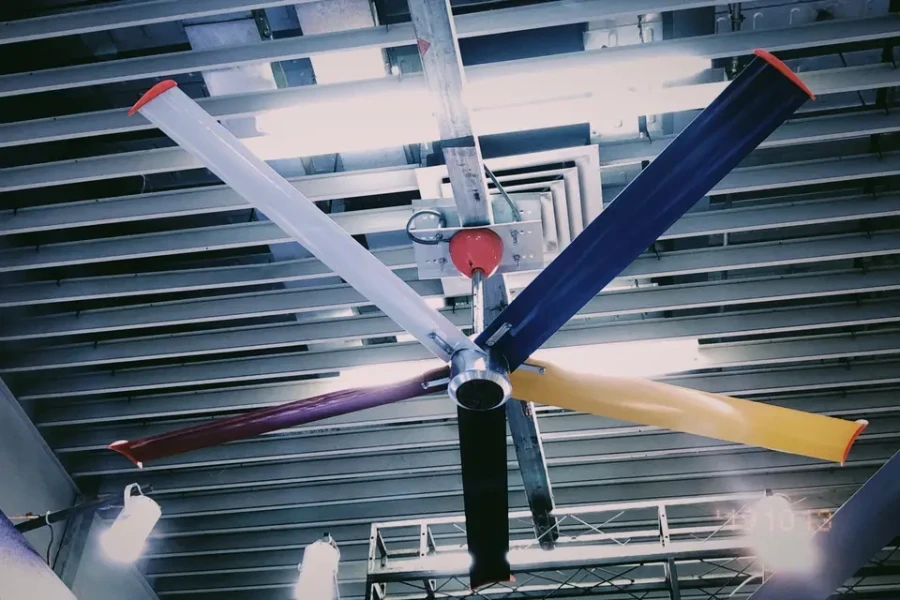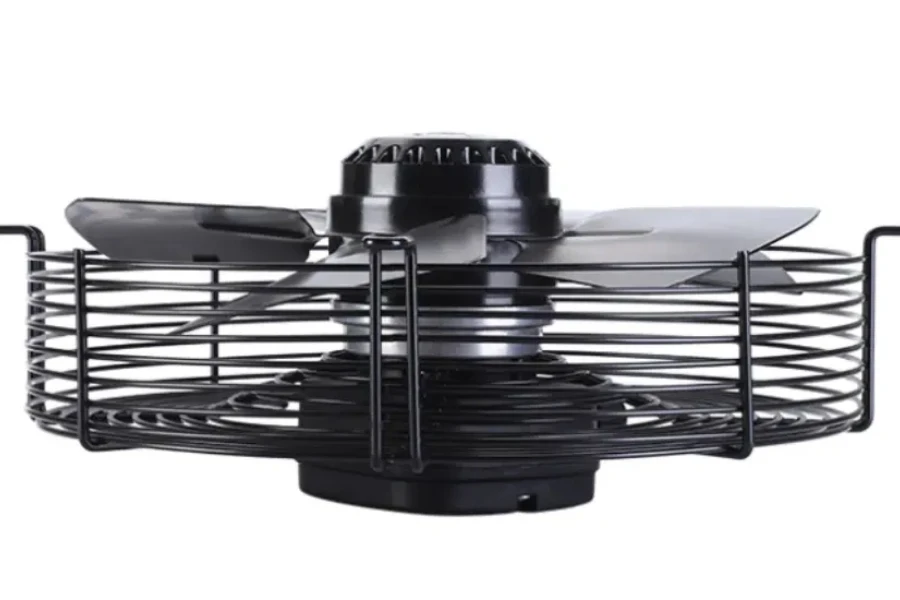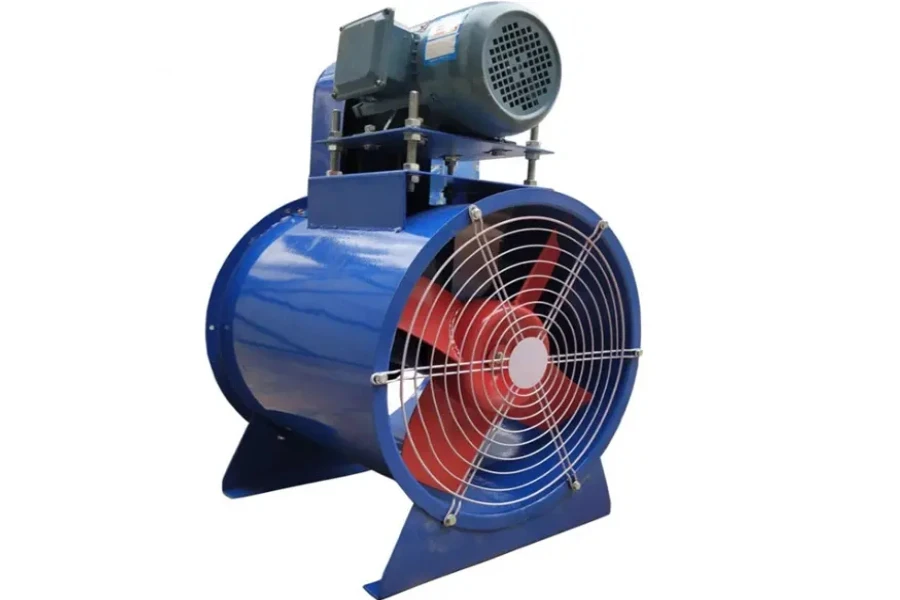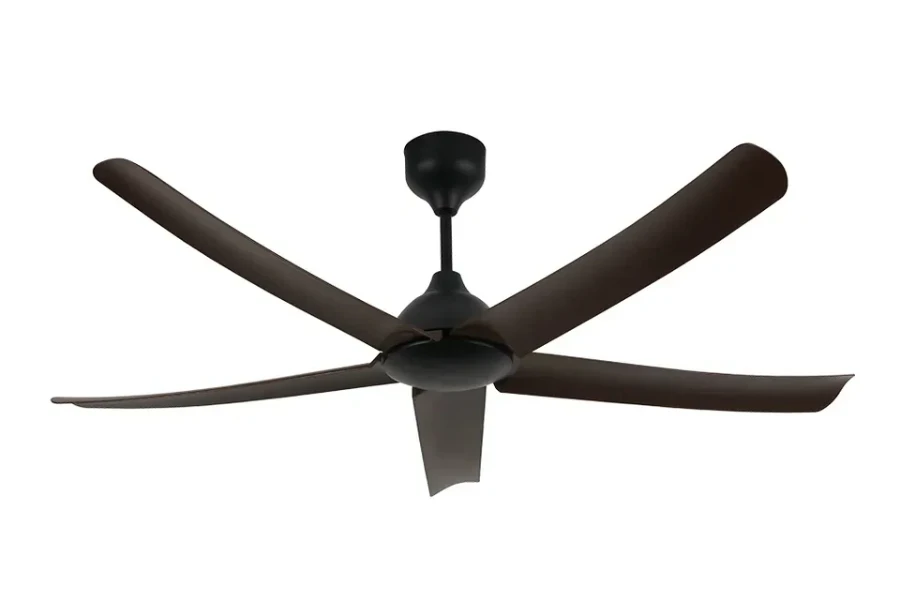Axial flow fans are used for different purposes, such as for cooling mechanical equipment, heat deposition, and ventilation. The axial flow fans covered in this article are widely used because of their range of benefits. They have a simple axial-flow structure, produce large volumes of air, and are used as exhaust fans in industries and kitchens.
There are various types and models of axial flow fans available, and many manufacturers are in the market. As you start investing in axial flow fans, it is important to have the right information at your fingertips.
This article will discuss the market share for the axial flow fans, and then it will outline the different types of axial flow fans and how to select the ideal one. So read on to find the right fan for your project or workspace!
Table of Contents
Market share for axial flow fans
Types of axial flow fans
How to select the ideal axial flow fan
Summary
Market share for axial flow fans

The axial flow fans market is segmented by speed (low, medium, high), size, application (cooling, radiator, ventilation), type (DC, AC, EC), end user (industrial, commercial, residential), and region. This market continues to experience significant growth over the years as manufacturers like Sofasco Fans and Hidria focus on new product developments and innovations. Most market players are integrating more complex technologies to maintain their competitive advantage in the global market.
Insight Partners indicated the axial flow fans’ global market value of USD 2,301.4 million in 2020. It was projected to increase at a compound annual growth rate of 4.3% to reach USD 3,219.8 million by 2028. The key driving factor for this growth will be pegged on the increasing applications of axial flow fans in various industries like mining, chemicals, and electronics.
The Asia Pacific region, with countries like India, China, and Australia, registers a considerably large market potential for axial flow fans. This is due to the steady industrial developments which need this equipment. The medium-speed segment acquired the largest market share in 2020 and is expected to equally grow at the fastest pace during the forecast period.
The cooling and refrigeration segment accounted for the largest share by application, while the ventilation segment will grow the fastest during the forecast period.
Types of axial flow fans
1. Vane axial fans

Vane axial fans are mechanical fans used for ventilation and air circulation in commercial and industrial settings. Their primary design is a hub attached with several angled vanes or blades. When the fan is turned on, the hub and blades revolve, drawing in the air via the fan and then pushing it out. These fans can move large volumes of air at high velocities in applications that require high static pressures and flow rates. The applications include cooling towers, ventilation systems, and conditioning systems.
2. Tube axial fans

Tube axial fans are designed to move large volumes of air in industrial and commercial settings to provide ventilation. They have motors and impellers, which are housed in cylindrical tubes. The impeller has a hub attached with blades that rotate to draw air into the fan through the tube. This collected air is channeled out of the tube in a specific direction via a duct or ventilation shaft. The impeller is designed to reduce turbulence and maximize airflow. This allows the tube axial fans to handle high flow rates and thus are efficient.
3. Propeller axial fans

Propeller axial fans use a set of blades attached to a central hub to provide airflow. In industrial and commercial applications, they remove heat or fumes, circulate air, and give ventilation. The propeller axial fans pull air linearly via the blades and parallel to the fan’s axis to propel it forward. This creates low-pressure zones behind the fan, which collects more air from the immediate environment leading to a continuous airflow.
Propeller axial fans are applied in cooling large industrial spaces like warehouses to provide ventilation in parking garages and commercial kitchens. They are mostly used in heating, ventilation, and air conditioning systems (HVAC) to control temperature and provide air circulation.
How to select the ideal axial flow fan
1. Price
Axial flow fans have different prices depending on the following factors. The fan size considerably affects its price. On average, larger fans tend to be more expensive than smaller fans. In this case, selection should be based on the available space and the needed airflow. The motor type, whether AC or DC, determines fan prices. DC motors are more expensive than AC motors as they optimize energy efficiency and speed control.
Moreover, the material quality used in the construction of the fan will impact its price. This is because it affects the fan’s performance and durability, and thus higher-quality materials increase the price. The average cost of small-sized axial flow fans of around 6-8 inches in diameter is USD 20-50. Larger axial flow fans with a diameter of 12-24 inches cost around USD 100-500.
2. Noise level
Buyers should choose a low decibel (dB) rating when acquiring fans. On average, fans with a dB rating of about 50 or lower are considered quiet. The fan size affects noise level, as larger fans emit less noise than small fans because they move more air at a lower speed, which reduces noise. Lower-speed fans produce less noise than high-speed fans.
Fans with angled or curved blades are quieter than straight-bladed fans. Also, fans with DC motors result in less vibration and noise than AC motors. Lastly, fans constructed with higher-quality materials are expensive but have noise-reduction features.
3. Speed
Considering the speed, fans with higher revolutions per minute (RPM) ratings are the most appropriate. Higher-speed fans can easily move air even though they might be noisier. Buyers should select the fans with speed control options like a Pulse Width Modulation (PWM) control or a fan controller. Generally, higher voltage fans give higher speeds; thus, the voltage should match the power source. Also, angled or curved blade designs offer efficiency with higher airflow at lower speeds.
On average, small axial flow fans with a 6-8 inches diameter have an RPM of around 1500-4000. The 12-24 inches diameter fans can offer a speed of about 500-2500 RPM. On the other hand, high-speed axial flow fans in various industrial applications have up to 10,000 RPM or higher speeds.
4. Durability
Some fans in the market have additional features that ensure they can function efficiently in harsh environments. For instance, protective coatings, sealed bearings, and high IP ratings. Fans constructed from high-quality materials like high-impact plastic and metals can easily withstand wear and tear. The materials can also resist damage from humidity, dust, and extremely high temperatures.
Also, the Ingress Protection (IP) rating shows the level of protection a fan has against water and dust. In this case, fans to be used in clean, dry, and indoor surroundings require an IP20 rating. However, a minimum IP44 rating is advised for fans that will be used in damp environments.
5. Efficiency
Buyers should check out the product specifications of various fans to ensure they meet their efficiency needs. Large-sized fans are more efficient than small fans as they move more air while consuming less power. Some fans contain the variable speed control feature. This enables buyers to choose the fan speed that matches the needed airflow.
Also, DC motor fans are more efficient than AC motor fans because they need less power. Additionally, curved blades on fans are more efficient due to their ability to give higher airflow while operating at lower speeds.
Summary
In the axial flow fans industry, customer reviews could ensure potential buyers acquire the fan that meets their requirements. Considering the factors mentioned in the above guide, buyers can select the fan that delivers the desired performance with a longer service life. To learn more, and to browse listings of high-performance axial flow fans, visit Alibaba.com.



